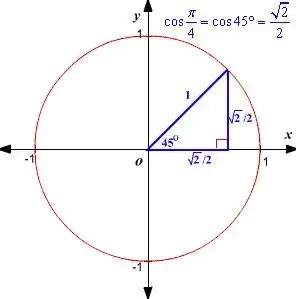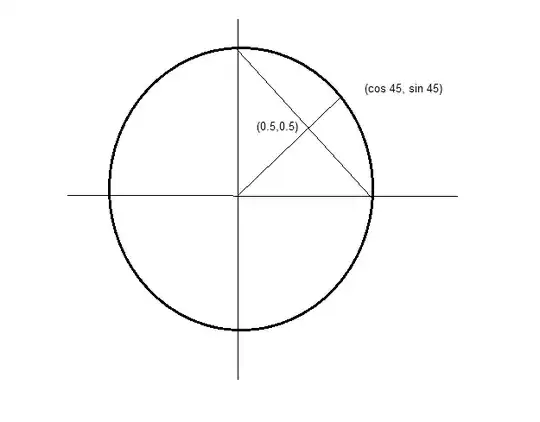$$ X \in [0°,90°] $$
Are just the inputs to the function $$ f(\color{red}{x}) = \cos(\color{red}{x}), \ x \in X $$.
And $ 45° $ is the mid point of the input, Why it should be necessary that the output is also the mid point?
Consider $$ f(x) = \frac{1}{x} $$ Start inputting $ x= {{ 1,2,3,4,5,6,7,8,9}}$
Here also, $$ f(\color{green}{1}) = \color{green}{1} $$
Now, mid point of input is $5$.
But $$ f(\color{green}{5}) = \frac{1}{\color{green}{5}}≠5 $$
So we conclude that it may happen that $\sin(\color{green}{0°}) = \color{green}{0} $ but there is not a direct relation/pattern between this sine or cosine function with its output (range).



